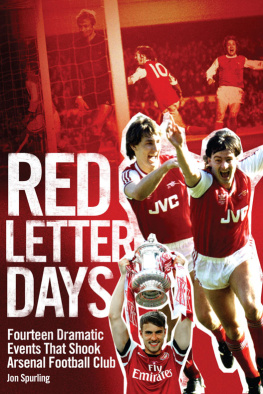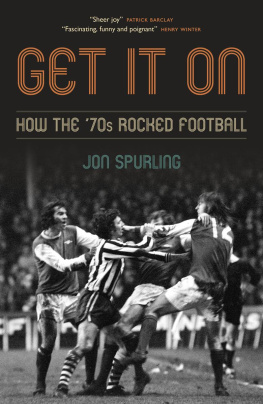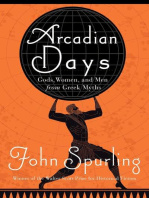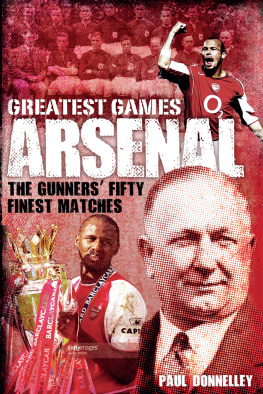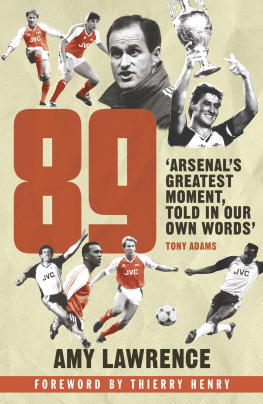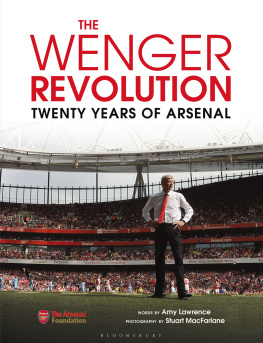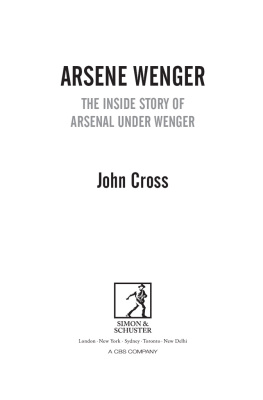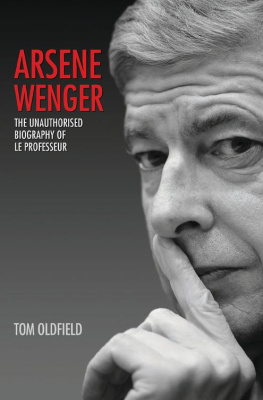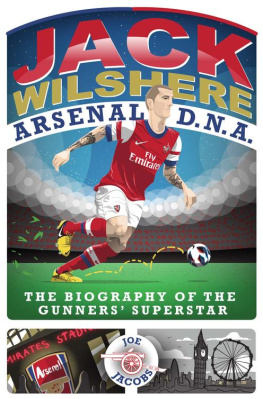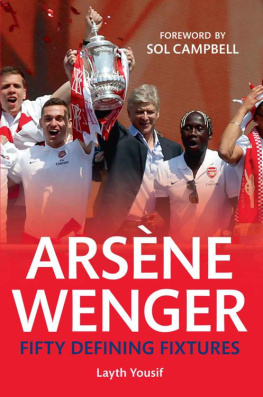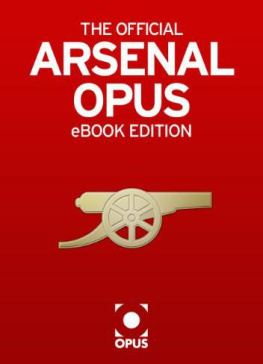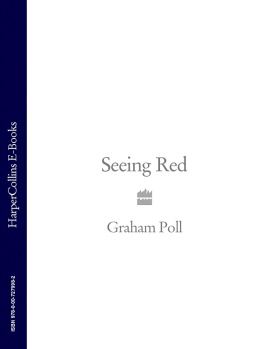

First published by Pitch Publishing, 2014
Pitch Publishing
A2 Yeoman Gate
Yeoman Way
Durrington
BN13 3QZ
www.pitchpublishing.co.uk
Jon Spurling, 2014
All rights reserved under International and Pan-American Copyright Conventions. By payment of the required fees, you have been granted the non-exclusive, non-transferable right to access and read the text of this e-book on-screen. No part of this text may be reproduced, transmitted, downloaded, decompiled, reverse-engineered, or stored in or introduced into any information storage and retrieval system, in any form or by any means, whether electronic or mechanical, now known or hereinafter invented, without the express written permission of the Publisher.
A CIP catalogue record is available for this book from the British Library
Print ISBN 78 1-90962-639-3
eBook ISBN: 978-1-909626-93-5
--
Ebook Conversion by www.eBookPartnership.com
Contents
For Mum, who didnt enjoy football, but quite enjoyed the swearing, x.
For Dad, who enjoys neither.
Acknowledgements
I D like to thank the following for their help with this book: Sally Davis, for her excellent research into the life and times of Henry Norris; Tony Sandell and all his staff at the Arsenal Museum for making my time looking at the fascinating Catton archive so enjoyable and worthwhile; and to the staff at the Local History Archives Centre in Islington. The Islington Gazette in all its guises was a fantastic resource, particularly up to the end of the 1930s, and the archive was a real treasure trove of information, although my eyes were crossed after peering at all that Microfilm.
Thanks also to everybody at the Colindale Newspaper Library for their help and patience just as their move across London was in the offing. Ive never met Arsenal historians Andy Kelly and Tony Attwood, who write the Woolwich Arsenal blog, but Ive found their work to be both informative and challenging, especially on the pre-Highbury era. Thanks chaps.
Im indebted to John Harding, author of the excellent book on Alex James, and the late Brian Woolnough and Mike Langley for supplying me with cassettes of interviews they conducted with Tom Parker, George Male and Joe Hulme from the 1930s team. Hearing their voices was quite something, and I hope that excerpts from the interviews give the chapters on the 1930s a far more three-dimensional feel than they would otherwise have had. Id also like to thank Alex Fynn for his sage advice down the years on football writing.
Thanks to the Arsenal players past and present who have contributed to the book, especially Frank McLintock, Perry Groves, Patrick Vieira and Gilberto, who went beyond the call of duty to unearth new contacts for me to speak to. Thanks also to fellow Arsenal writer David Tossell for lending me the Bertie Mee DVD and to Simon Lowe, and his impeccable knowledge of all things Stoke City. And to all the supporters Ive spoken to down the years for Rebels For The Cause, Highbury: N5 and Red Letter Days, thank you for your time and your insight.
Down the years, Kevin Whitcher Gooner editor has always encouraged my (all too rare) pieces and remains a good sounding board for all things Arsenal. And to Ian Trevett erstwhile of the now deceased Highbury High, thanks for printing my pieces. Thanks to Andy Exley at Arsenal for all the commissions and the assistance with the official magazine, the programme, and this book. Grateful thanks also to all the chaps at FourFourTwo over the last decade Hugh, Hitesh, Nick, Gary, Andy, Louis and Dave, and Andy Lyons at When Saturday Comes for commissioning so many of my non-Arsenal pieces. Thanks also to Clare for lending me her Kindle. Thanks to everyone at Pitch for showing faith in the book, to Duncan Olner for the cover design, Derek Hammond for his work on the blurb and the jacket and sleeve, to Dean Rockett for his sensitive proofreading of the text, and to Paul and Jane for their encouragement and for not having a go at me because I was late getting everything done!
And to my agent David Luxton for closing the deal as they say these days. To Helen and Phoebe both of whom I know are unlikely to stray beyond this line thanks for your patience and hands off approach to this project! The book is finally finished. X
Follow Jon Spurling on Twitter @JonSpurling1 (now that his nephews have shown him how to use it).
Foreword
I N 1999, research by the Independent revealed that, based on league finishing positions, Arsenal were Englands leading team of the 20th century with an average final position of 8.5. They narrowly pipped Liverpool to top spot, with Everton and Manchester United some way behind in third and fourth place. Factor in that since 2000, the Gunners average league position has been 2.87, Arsenal remain by some distance Englands most successful club. Apparently.
But in reality, what do these figures prove? That when it comes to the big picture, Arsenal have, broadly speaking, always been resolutely consistent and frequently in the running for glory. They also hint at the clubs underlying conservative view, as espoused by Ted Drake, We have what we hold. No prolonged periods in the lower-division wilderness for the Gunners, unlike many of their key rivals, including the Manchester clubs and Liverpool.
But the statistics mask Arsenals colossal peaks and the deep troughs; the gluttonous bursts of success and the long periods of retrenchment and missed opportunities. In short, they do a disservice to the clubs often turbulent history. Red Letter Days is an investigation of events which define an era, often marking the end of one historical cycle and the dawning of a new one. It is not an extended narrative of Arsenals greatest games, or simply a paean to its epoch-defining individuals.
Arsenals history as with any club can be broken down into thousands of game-changing, season-altering junctures. A crucial goal here. A dramatic save there. A timely piece of invective from the club captain, perhaps, signing the wrong man at the wrong time, a key team meeting or a tannoy announcement at the home of a deadly rival which acted as a spur to the visitorsa myriad of these moments are contained within the pages of this book. But equally well, there are a number of non-negotiable events in Arsenals rich and varied history. These form the overarching focus of each of the 14 chapters.
Rather than hone in on the fulminating climax to the 1970/71 Double season against Tottenham Hotspur and Liverpool, its the story which sits behind the crucial FA Cup semi-final at Hillsborough against Stoke City which is the focus of attention because that was the timeline-altering clash.
Conversely, the 1930 Zeppelin final figures heavily because it symbolised the rise to power of Chapmans Arsenal. As a club, Arsenal are strongly aware of the role of individuals in mapping out their history, revealed by the deployment of the 32 cores on the outside of the Emirates Stadium and the statues of Chapman, Wenger, Bergkamp, Henry and Adams outside the ground. But such deification of Arsenals historical figures is, to some extent, open to debate, and Red Letter Days as well as looking closely at Arsenals bronze icons assesses the defining moments of others like Norris, Mercer, Mee, McLintock and Graham and assesses how what they did altered the course of the clubs fortunes. It also suggests that the contributions of Rooke, Sexton and Rioch should be more recognised.
Next page
